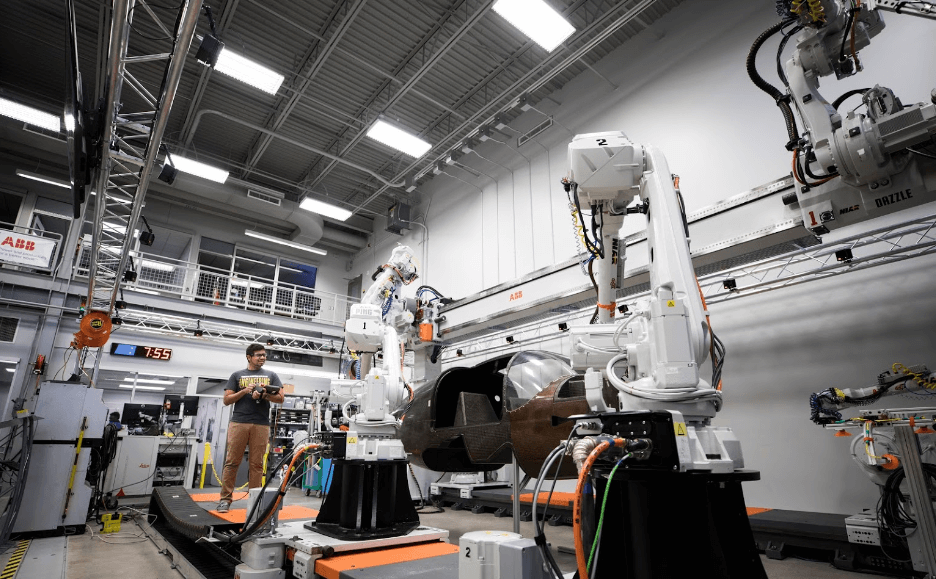
Oct 11, 2019
Last week, Governor Kelly spoke at the Kansas Renewable Energy Conference in Manhattan. In her speech, she discussed the ways Kansas has risen to the forefront of innovation in renewable energy, and she acknowledged that our work is not finished. In fact, we’re just getting started. “Our state is positioned to be a leader in renewable energy production for years to come,” said Governor Kelly.
When it comes to producing clean, renewable energy, the opportunities are all around us. In Kansas, it starts with having the right resources. This is a premier location for renewable energy businesses to grow, with natural resources that support the development of wind, solar and bioenergy.
Our state has been recognized by the American Wind Energy Association as number two in wind energy potential. This means we have an abundant and reliable wind resource that is ready for more development.
Since the state’s first wind development project in Gray County in 2001, we have come a long way—with the bulk of wind development taking place over the course of just ten years. We set our sights high, and we’ve accomplished a lot. Kansas is now number one in wind energy as a share of total electricity generation in our state.
Take a look at the latest Wind Map and listing of current wind projects here:
Wind doesn’t just provide energy; Kansas wind also powers 12,000 jobs in our state. In addition to job creation, the wind industry invests heavily in local communities, bringing in $12 billion in capital investment and generating $28 million in state and local tax payments. This investment has powered new opportunities, especially in rural areas, where wind developers paid $20 million in land lease payments in 2018 alone.
Kansas was recently named one of the top five states to operate a wind farm. We have 5,653 MW of wind farm projects currently in operation and an additional 1,900 MW on the way from new projects recently announced. With high potential and high capacity, Kansas will continue to grow its output and attract more purchasers, capital investment and jobs to power our state. Purchasers of Kansas wind energy include: Google, Yahoo!, Microsoft, Target, T-Mobile, Brown-Forman, Kohler, Iron Mountain, and Royal Caribbean Cruise Lines.
Last month, ENGIE North America had a grand opening ceremony for the Solomon Forks Wind Farm and the celebration of the neighboring East Fork wind project, scheduled to become operational in the spring of 2020. Located near Colby in Thomas County, these two projects combined represent over $650 million in investment. Corporate off-takers for these projects include T-Mobile, Target, Brown-Forman (producer of Jack Daniels) and the wind turbines for the Solomon Forks project were produced right here in Kansas by Siemens Gamesa Renewable Energy.
With the influx of investment, Kansas is rising to meet the job demand through education and workforce development that prepares Kansans for jobs in the growing wind energy industry. Cloud County Community College has a Wind Energy Technician program that offers a two-year associates degree and a one-year certificate program and internship opportunities. Hutchinson Community College also hosts a renewable energy training program. The Kansas Wind Applications Center at Kansas State University offers unique education opportunities for students and operates the Kansas Wind for Schools program, which encourages participating schools to incorporate wind energy education into their science curriculum.
The National Center for Aviation Training at Wichita State University specializes in composites training for a variety of industries, including wind component manufacturing, and conducts wind-related research involving aerodynamic testing, nanomaterials and blade fatigue and fracture issues. A “green jobs” grant through the U.S. Department of Labor also helps provide specialized training to meet workforce needs, including a wind energy technician apprenticeship program that combines classroom and online instruction with on-the-job training under the supervision of a company mentor.

As we look at new developments in the bioenergy sector, there are opportunities in renewable natural gas from a variety of feedstocks, as well as projects like the state-of-the-art bio-refinery under construction in Colwich, Kansas that will result in the production of the lowest carbon ethanol gallon in the U.S. ethanol industry today. The project represents an investment of $175 million and should be fully operational by the end of the year.
We are also seeing growth in solar energy development across the state, from the June groundbreaking for the 20-megawatt Johnson Corner Solar Project in southwest Kansas to the September ribbon-cutting in Baldwin City for their new 1-megawatt solar plant developed in partnership with Evergy.
As more and more companies set corporate sustainability goals, interest in renewable energy options continues to rise, with many companies committing to 100% renewable electricity. As those corporate leaders make decisions about how they will meet these goals and where they will invest and grow, it’s important to offer greater choice in options to purchase renewable energy at a competitive rate.
Through Evergy’s new Renewables Direct Program, Kansas businesses and government agencies have signed on for 200 megawatts of affordable Kansas wind. The fourteen Kansas organizations enrolled in Renewables Direct will receive all or a portion of their electricity from the Soldier Creek Wind Energy Center being built in Nemaha County. The Solider Creek project has provided 250 construction jobs and 20 permanent green energy jobs to Nemaha County and will generate more than $50 million in land-rights payments over the next 30 years. Renewables Direct provides large customers with a path toward their sustainability goals and allows them to lock in a portion of their electricity prices for up to 20 years.

This year’s Renewable Energy Conference helped advance the conversation around renewables, now we’re looking forward to taking a deeper look at our state’s energy future and the key sectors of our economy. At the Conference, the Governor announced the creation of a new statewide, comprehensive energy plan that will be developed in the coming months. Kansas has been without a statewide energy plan for nearly a decade. “Technology, energy demands, workforce needs and even our climate have all changed dramatically,” Governor Kelly said. “It’s time to recalibrate so that we can meet the current and future needs of our communities and compete in a global economy.”
In her speech, Governor Kelly reinforced the need for collaboration in putting together the plan. “Developing a new energy plan for Kansas will require incredibly thoughtful planning, thorough data analysis and extensive engagement from industry, stakeholders and the public,” said Governor Kelly.
Earlier this month, we launched the Framework for Growth strategic planning process in order to develop a comprehensive plan for economic development in Kansas. Growing our state’s renewable energy sector will no doubt be a major priority in our state’s economic development strategies going forward. What it takes now is strategic alignment across these key opportunities and developing the right tools and environment to encourage further growth and investment in Kansas.
With bold new strategies and tools, we’ll continue to take large steps into our future as a renewable energy leader.
Ad Astra Per Aspera,
-DT